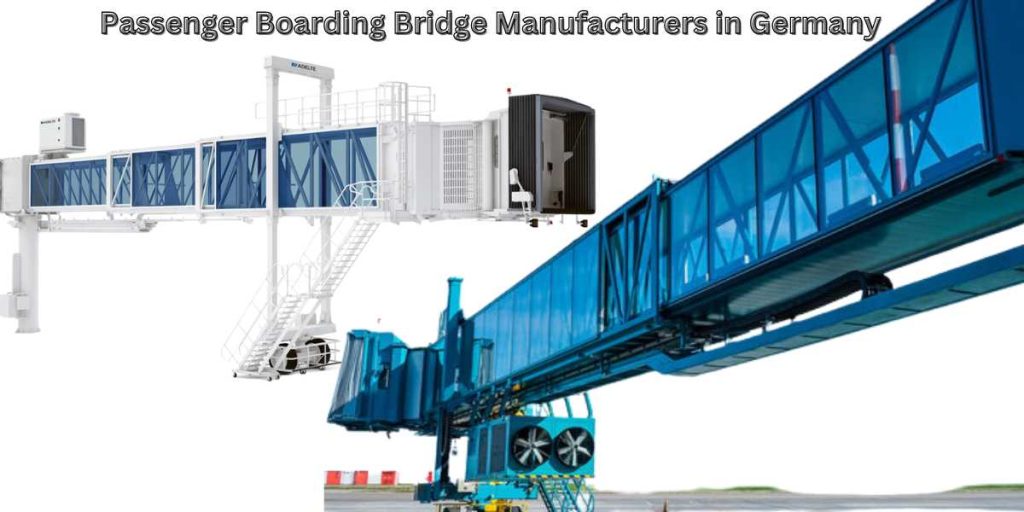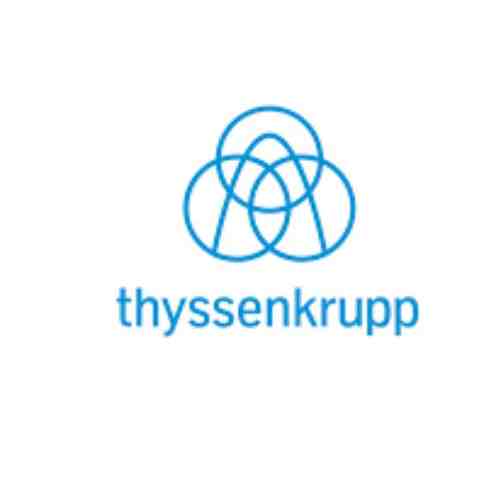Exploring Passenger Boarding Bridges in Germany in 2025
Germany, a nation synonymous with innovation and engineering prowess, is at the forefront of passenger boarding bridge (PBB) technology. As the aviation industry in 2024 embraces efficiency, sustainability, and an enhanced passenger experience, German manufacturers are leading the charge with cutting- edge bridge systems and integrated solutions. This blog post takes you on a whirlwind tour of PBBs in Germany, exploring the landscape of manufacturers, technological advancements, and the exciting future of air travel in this dynamic country.

Who Builds the Bridges?
Germany boasts a rich tapestry of companies dedicated to crafting exceptional PBB systems. Here are some of the key players:
-
- HÜBNER Group: A globally recognized leader, HÜBNER is renowned for its robust and technologically advanced bridges. Their recent development of an adjustable sliding floor unit addresses the challenge of accommodating diverse aircraft types.
-
- FMT GmbH: Recently acquired by Dabico Group, FMT brings a wealth of expertise to the table. Their PBBs are known for their reliability and ease of operation.
-
- ThyssenKrupp Airport Systems: This engineering giant offers a comprehensive portfolio of PBB solutions, catering to various airport sizes and passenger volumes.
These are just a few examples, and the German PBB manufacturing landscape is brimming with talent. This competitive environment fosters continuous innovation, ensuring German bridges remain at the pinnacle of quality and functionality.
Tech Titans Take Flight
German PBBs are not just about connecting passengers to planes; they’re about creating a seamless and efficient travel experience. Here’s a glimpse into the exciting world of PBB technology:
-
- Automated PBBs: Imagine boarding bridges that maneuver themselves into position without human intervention. This futuristic vision is becoming a reality in Germany, with companies like Dabico developing autonomous PBBs for enhanced operational efficiency.
-
- Triple-Tunnel PBBs: Catering to the ever-growing size of modern aircraft, triple-tunnel PBBs offer additional clearance for larger wingspans and improved passenger flow. These innovative bridges are being implemented at major German airports to handle the demands of modern air travel.
Green Bridges for a Greener Future
Environmental consciousness is a top priority in Germany, and this extends to the aviation sector. German manufacturers are developing energy-efficient PBBs that incorporate features like:
-
- LED lighting: This reduces energy consumption significantly compared to traditional halogen bulbs.
-
- Smart climate control systems: These systems optimize heating and cooling within the bridge, minimizing energy waste.
-
- Regenerative braking systems: By capturing energy during bridge movements, these systems can be reintroduced to the power grid, promoting a more sustainable operation.
The Future of German Air Travel
The future of German air travel promises to be a fascinating blend of technological advancements and passenger-centric design. Here are some exciting possibilities on the horizon:
-
- Biometric boarding integration: Imagine seamlessly boarding a flight through facial recognition or fingerprint scanning directly on the PBB. This technology is being explored in Germany, promising a more secure and streamlined boarding process.
-
- Enhanced accessibility features: German PBBs are increasingly incorporating features like wider doorways, lowered handrails, and improved signage to cater to passengers with disabilities. This ensures an inclusive and comfortable travel experience for all.
-
- Airport terminal optimization: PBB design is being integrated into the overall airport terminal design, creating a more cohesive and efficient flow for passengers. This holistic approach streamlines the entire travel journey.
Regulations Ensuring Smooth Takeoffs
Passenger safety is paramount in the aviation industry, and Germany upholds some of the strictest regulations for PBBs. These regulations cover aspects like:
-
- Structural integrity: Bridges are rigorously tested to ensure they can withstand the weight of even the largest aircraft.
-
- Fire safety: Materials used in PBB construction are rigorously fire-resistant, ensuring passenger safety in case of emergencies.
-
- Maintenance protocols: Regular inspections and maintenance are mandatory to guarantee the continued safe operation of PBBs.
These stringent regulations give passengers peace of mind, knowing that German PBBs are built to the highest safety standards.
From Fabrication to Functionality
The manufacturing process of a German PBB is a marvel of engineering precision. Here’s a simplified breakdown:
-
- Design and Engineering: The PBB design is meticulously crafted, taking into account factors like aircraft compatibility, airport layout, and passenger flow.
-
- Material Selection: High-quality steel and aluminum are used to ensure structural strength and durability.
-
- Fabrication: Cutting-edge technologies like computer-aided design (CAD) and robotics ensure precise
Price List
The cost of a Passenger Boarding Bridge (PBB) in Germany can vary significantly depending on factors such as size, specifications, and technology features. Generally, prices range from €500,000 to €2,000,000 or more for a single PBB unit, with additional expenses for installation, maintenance, and optional upgrades. It’s advisable to consult with PBB manufacturers or suppliers for precise pricing tailored to specific requirements.
Get a Quote from Top 6 Global Leader PBB Manufacturers
FAQs
What are Passenger Boarding Bridges (PBBs)?
PBBs are enclosed, movable connectors that bridge the gap between airport terminals and aircraft, facilitating safe and efficient passenger boarding and disembarkation.
How do Passenger Boarding Bridges benefit airports in Germany?
PBBs enhance airport operations by streamlining the boarding process, improving passenger flow, and ensuring a seamless transition between terminals and aircraft.
Are Passenger Boarding Bridges environmentally friendly?
Yes, many PBB manufacturers in Germany prioritize sustainability by designing energy-efficient bridges and exploring eco-friendly materials and technologies.






